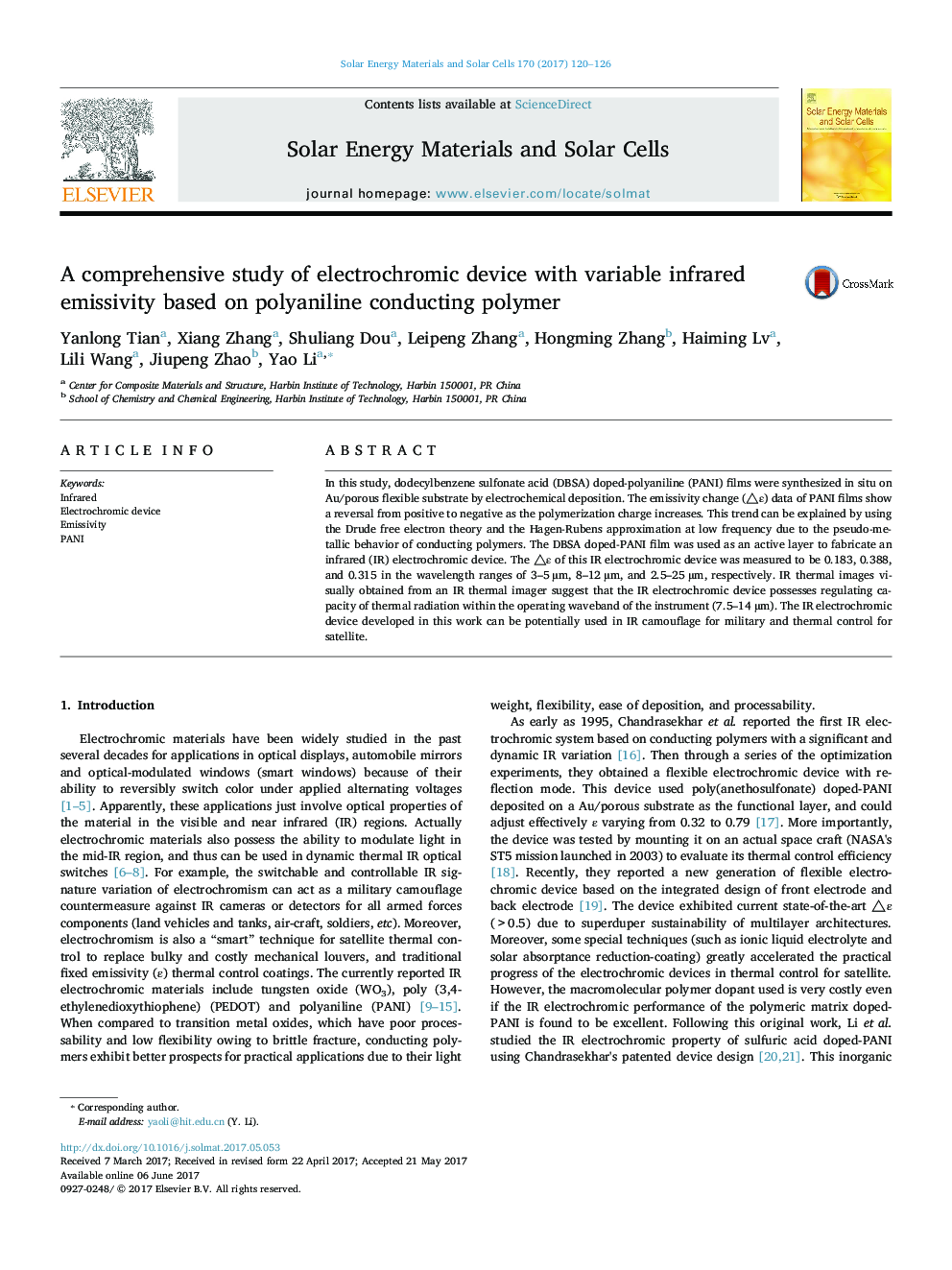| Article ID | Journal | Published Year | Pages | File Type |
|---|---|---|---|---|
| 6456817 | Solar Energy Materials and Solar Cells | 2017 | 7 Pages |
â¢The DBSA doped-PANI films were prepared using Au/porous membranes as substrates.â¢The â³Îµ data of PANI films exhibit a surprise reversal from positive to negative.â¢The device shows an enhanced IR electrochromism with a â³Îµ of 0.315 in 2.5-25 µm.
In this study, dodecylbenzene sulfonate acid (DBSA) doped-polyaniline (PANI) films were synthesized in situ on Au/porous flexible substrate by electrochemical deposition. The emissivity change (â³Îµ) data of PANI films show a reversal from positive to negative as the polymerization charge increases. This trend can be explained by using the Drude free electron theory and the Hagen-Rubens approximation at low frequency due to the pseudo-metallic behavior of conducting polymers. The DBSA doped-PANI film was used as an active layer to fabricate an infrared (IR) electrochromic device. The â³Îµ of this IR electrochromic device was measured to be 0.183, 0.388, and 0.315 in the wavelength ranges of 3-5 µm, 8-12 µm, and 2.5-25 µm, respectively. IR thermal images visually obtained from an IR thermal imager suggest that the IR electrochromic device possesses regulating capacity of thermal radiation within the operating waveband of the instrument (7.5-14 µm). The IR electrochromic device developed in this work can be potentially used in IR camouflage for military and thermal control for satellite.
